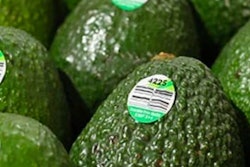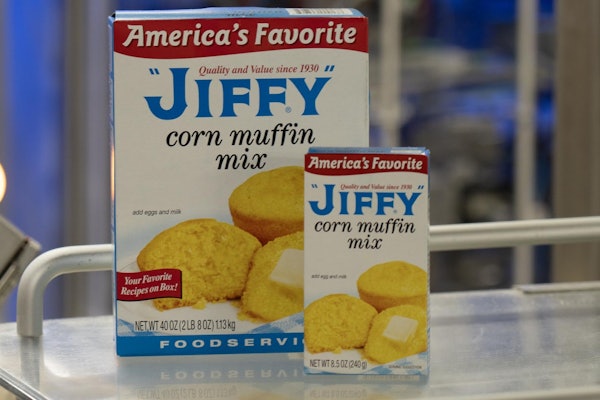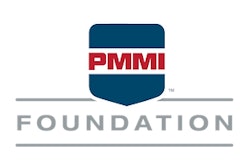DNO Produce, a Columbus, Ohio-based distributor of fresh-cut and bulk produce, has introduced a new compostable cup and lid solution in collaboration with supplier Eco-Products. Specifically designed for K-12 school nutrition programs, the packaging features a 4-oz molded fiber cup made from renewable resources. Once food—typically cut fruit or vegetables—is placed inside, the cup is sealed with a plant-based lidding film.
The molded fiber cup is BPI-certified compostable, and the lidding film meets ASTM standards for compostability.
“Our transition to more sustainable packaging is the culmination of a multi-year effort to align our operations with our sustainability goals,” says Alex DiNovo, DNO’s president. “During the COVID-19 pandemic, the demand for individually packaged produce surged, and we saw an opportunity to make some changes. Eco-Products has been an incredible partner, and we couldn’t be prouder to be part of this revolutionary product.”
With many school districts continuing to face staffing challenges, there is a growing need for individually packaged, pre-portioned food. DNO’s prepared produce eliminates the need for schools to sort, wash, cut, and portion fresh fruits and vegetables themselves.
Eco-Products notes that the tray is made from natural fibers—such as sugarcane and bamboo—that are both reclaimed and renewable. The materials are industrially compostable and compliant with ASTM standards. The lidding film is a BPI-certified structure made from a blend of PE, PLA, and cellulose materials. This formulation is engineered to replicate the performance of traditional non-compostable films while meeting compostability standards.
Shelf life considerations
Packaging World spoke with Randy Shepherd, national account manager–specialty packaging at Eco-Products, to learn more about the project. Shelf life is a critical factor when working with fresh produce, especially in the context of compostable packaging for schoolchildren.
“Our compostable packaging is engineered to match or exceed the functional requirements of conventional formats. This includes maintaining seal integrity, preventing moisture ingress or loss, and preserving product freshness throughout the intended shelf life,” Shepherd says. “Barrier properties are matched to current product needs. The lidding film offers oxygen and moisture transmission rates (OTR/WVTR) similar to non-compostable materials, preserving freshness, appearance, and food safety. The tray is lined with PBAT (polybutylene adipate terephthalate), providing adequate performance for short shelf-life applications.”
Machine compatibility
Another key factor is machinability. DNO, like many food producers, uses an established base of packaging equipment with significant remaining operational life. The need for major capital expenditures (CAPEX) on new machinery presents a barrier for brands and CPGs looking to switch packaging formats.
“This is one of the most important questions in any packaging transition,” says Shepherd. “Innovation is only valuable if it’s commercially viable—which means it must run on existing equipment with minimal adjustments and no major capital investment. Our molded tray is custom-designed to fit existing tray-sealing dies, and the lidding film was chosen to match current seal pressures and temperatures. We regularly visit customer facilities to provide hands-on manufacturing support, ensuring efficient implementation.”
In most cases, only a slight decrease in sealing temperature is required compared to non-compostable materials, making the packaging compatible with standard tray sealers without costly retrofits.
Additional design considerations
Shepherd outlined several other important design considerations:
• Moisture Retention: The tray uses an exterior compostable liner, leaving the interior unlined to absorb product purge. This eliminates the need for a soaker pad and enhances both compostability and material efficiency.
• Seal Integrity: The lidding film must maintain a strong seal despite exposure to cold, moisture, and potential surface contamination—especially important during cold chain distribution.
• Compostability Compliance: Both the tray and film components meet BPI commercial composting standards.
• End-of-Life Planning: The packaging system includes compostable communications, consumer education, and support for municipal or industrial composting streams, facilitated by Eco-Products’ Product & Zero Waste (PZW) team.
• Cost Neutrality: By removing the need for soaker pads and optimizing material usage, the overall cost of this compostable solution can be comparable to conventional formats—offering sustainability without added expense.
• Collection: Neither party commented on disposal or collection practices for spent packaging at schools, and the plastic lidding material could be seen as a potential contaminant to recycling streams in certain circumstances. Still it's notable that locations like school lunch rooms (or stadiums or arenas or even fair grounds) tend to be closed environments where compostable materials do well in being collected and channeled to appropriate disposal locations, without contaminating municipal recycling.
DNO Produce currently serves school nutrition programs in 17 states, delivering fresh fruits and vegetables to thousands of K-12 students daily. With this new packaging format, DNO is advancing its goal of increasing the use of packaging made from renewable resources. PW

























